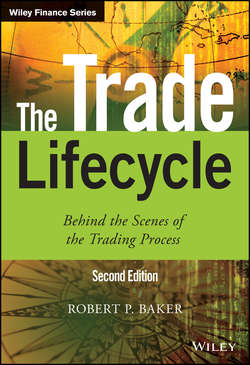Читать книгу The Trade Lifecycle - Baker Robert P. - Страница 23
На сайте Литреса книга снята с продажи.
Part One
Products and the Background to Trading
Chapter 3
Understanding Traded Products – Follow the Money
3.1 Spot trades
ОглавлениеA spot trade is the purchase of an asset for cash. It is the simplest financial product and is often referred to as an outright because, once the cash and assets are exchanged, there is no residual obligation on either party – the trade is settled outright.
In Figure 3.1, we are buying a fixed quantity of something in exchange for cash.
Figure 3.1 Cashflows on spot trade
Notice that the actual exchange does not necessarily take place when the trade is agreed. There is a gap known as the settlement period, which could be anything from a few hours to three days after transaction. However, everything is committed at the time of transaction and the size of payment and assets is fully determined and cannot be changed.
Examples of spot trades in various asset classes are:
■ Commodity: We buy 1m troy ounces of Gold from Commerzbank at USD 1000 per troy ounce.
■ Equity: We buy 10,000 Ford Motor Company shares from BNP Paribas at USD 17.32 per share.
■ FX: We buy 10m Swiss Francs from RBS at exchange rate of 1.118142 francs per US dollar.
■ Fixed income: We buy 5m IBM Bonds from Chase Manhattan at 92.88 cents per bond.
Note that when purchasing an equity or a bond, we have settled outright with the counterparty (BNP Paribas or Chase Manhattan in the examples above) so they have no further financial responsibility or liability, but we now own an active financial instrument and will need to manage it in order to draw dividends or coupons in the future from the issuer (Ford Motor Company or IBM respectively). An analogy is to purchasing home insurance from an insurance broker. Once the broker has sold the insurance he is finished with the deal; in the event of a claim you would have to go straight to the insurer.
